We all have our personal demons. It’s the magnitude of the demons which ultimately determine the hold they have on someone. Most of us can adequately deal with them but for others, some demons are just too great, and their lives are affected each and every day.
Today’s blog introduces you to some of the children of high-ranking Nazis including Hermann Göring, Martin Bormann, Heinrich Himmler, Hans Frank, and Rudolf Hess. Each child or relative dealt with or continues to deal with the infamous legacy of their father in different ways. The spectrum ranges from those who continued to embrace Nazi philosophy, ignore Nazi crimes and the complicity of their father in those crimes to those who essentially disowned and distanced themselves from the father and their family. In-between, there are the children who acknowledge the father’s crimes but cannot bring themselves to completely detach themselves from his evil legacy.
Did You Know?
Did you know that Copenhagen’s Tivoli Gardens was not the first Tivoli Gardens? Jardin de Tivoli or, Tivoli Gardens was located in Paris in the late 18th– and mid 19th-centuries and there were actually, three different parks by the same name. Located in what is now the 9th arrondissement and south of Place de Clichy, the first Jardin de Tivoli opened in 1795 and is considered the ancestor of amusement parks. It was a public garden where high-society type folks would gather for entertainment such as panoramas, marionettes, and magic lantern shows. It was closed in 1810 after Napoléon’s troops trashed the place. A second Tivoli was quickly reopened, and it lasted until 1825 when it was destroyed one night by people celebrating the coronation of King Charles X. The third and last Tivoli opened in 1826. This one was a “real” amusement park with roller coasters, labyrinths, and fireworks. One of the most popular “games” was pigeon shooting. Unfortunately, more than 300,000 pigeons were killed during an eleven-year period. This park was closed in 1842 and never reopened. One year later, the iconic entrance gates to Tivoli Gardens in Copenhagen, Denmark opened, and the park has run continuously since then despite much of it being burned down by the Nazis in 1943.
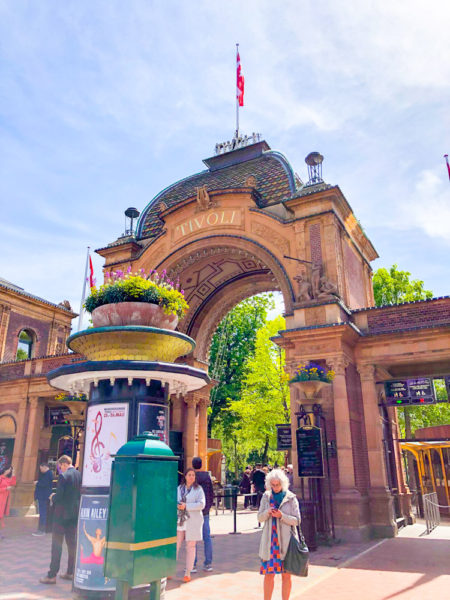

Edda Göring/Hermann Göring
Second in command behind Hitler for most of the war, Hermann Göring (1893-1946) committed suicide only hours before he was scheduled to hang for war crimes. His only daughter, Edda Göring (1938-2018) was eight years old at the time. Hitler was her godfather and like many daughters of high-ranking Nazi officials, she was referred to as Kleine Prinzessin or, “Little Princess.”
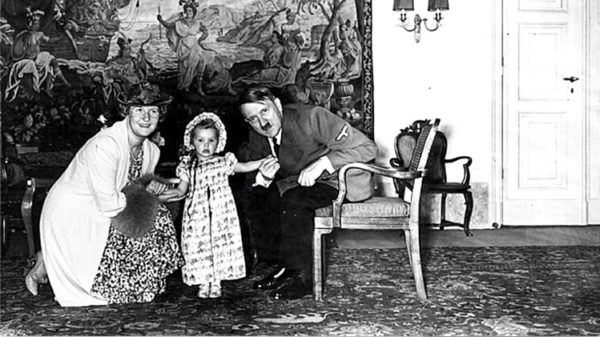
Two weeks after Germany surrendered, Edda and her mother, Emmy, were arrested by the Allies and interned. Released in 1946, the mother and daughter eventually settled in Munich where Edda studied law and became a law clerk. Emmy had contacts within the circle of surviving Nazi leaders, and she began to introduce Edda to them including Winifred Wagner, daughter-in-law of Hitler’s favorite composer, Richard Wagner. Winifred was a post-war ranking member of German right-wing organizations and she was responsible for Edda’s introductions to Ilse Hess (wife of Rudolf Hess), Gerdy Troost (wife of one of Hitler’s architects), Karl Ritter (Nazi film director), Oswald Mosley (British fascist leader; read the blog British Fascists and a Mitford here), and other mid-level ranking former Nazis.
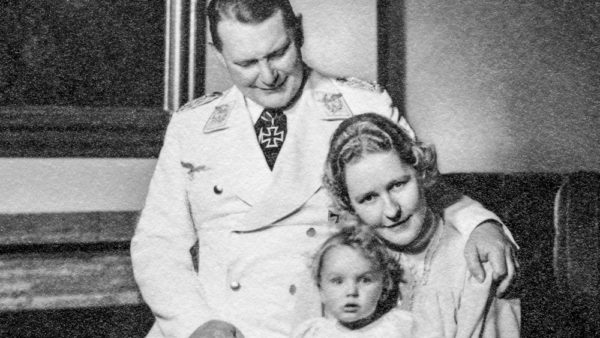
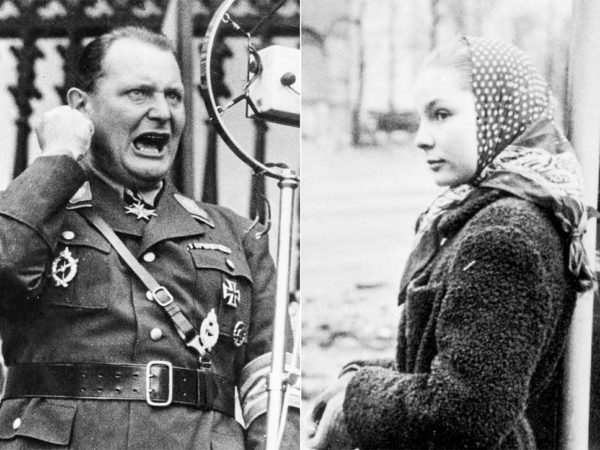
Throughout her adult life, Edda supported pro-Nazi causes, attended Nazi memorials for deceased war criminals, and continued to entertain former Schutzstaffel or, SS generals such as Karl Wolff and Wilhelm Mohnke. She always maintained her love and support for her father and clearly, Emmy made sure that her daughter would carry on the Nazi beliefs that she and her husband shared.
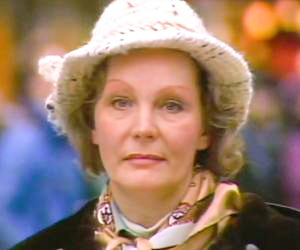
Controversy followed her into the 1960s as a result of her collection of art given to her by her father. The artwork was stolen by Göring, and pressure was put on his daughter to return the paintings. However, Edda was successful in her legal attempts against the State of Bavaria to obtain the return of her substantial jewelry collection (other former Nazis were successful in their efforts to have stolen art returned to them by the post-war German government in the 1950s). Other members of the Göring family took a different approach. Hermann Göring’s great-niece, Bettina Göring, admitted to voluntary sterilization so as to ensure the family genes might become extinct. Edda Göring never married nor did she produce any offspring.
Gudrun Himmler Burwitz/Heinrich Himmler
Heinrich Himmler (1900-1945) is acknowledged to have been the chief architect of the Final Solution and responsible for the murder of millions of people. When he committed suicide on 23 May 1945, his only legitimate daughter was fifteen years old. Gudrun Himmler (1929-2018) always maintained that her father was murdered by the British. Himmler enjoyed taking his blonde and blue-eyed daughter on visits to concentration camps (Gudrun would later say she never saw any of the atrocities). Gudrun and her mother were arrested by the Allies but released in late 1946. Settling in northern Germany, Gudrun found it hard to find employment due to her last name and the family history.
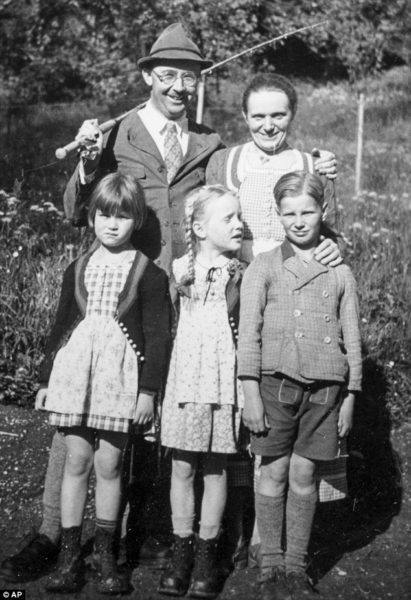
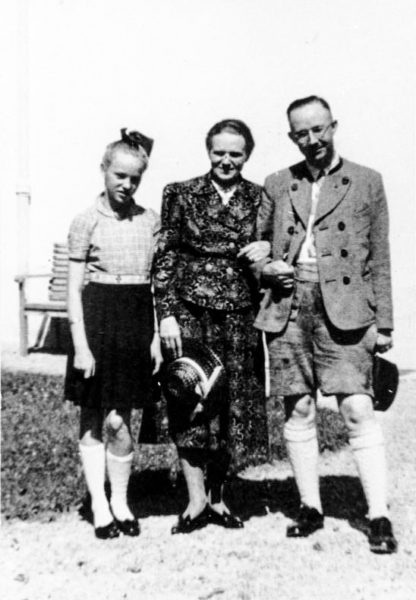
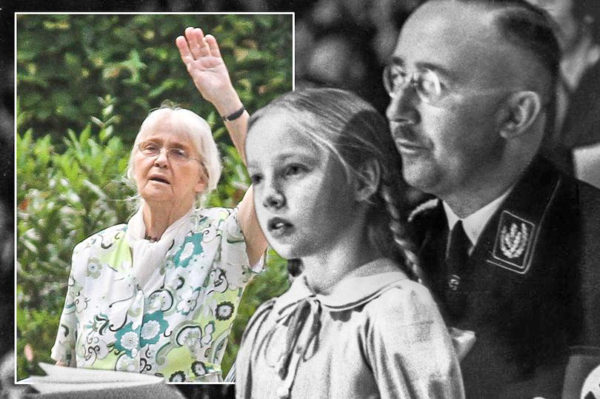
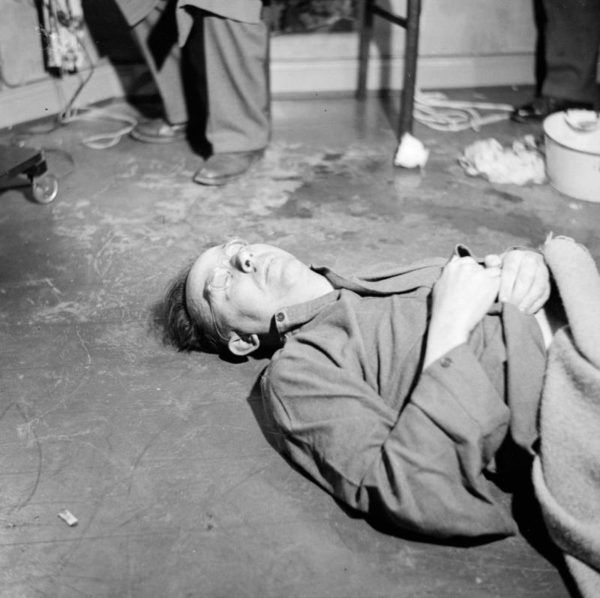
Gudrun worked under an assumed name for the West German intelligence agency between 1961 and 1963, when her true identity was discovered. She married Wulf Dieter Burwitz and they had two children. Burwitz was a member of the National Democratic Party of Germany or, the NPD. It is a far-right, ultranationalist, and neo-Nazi political party. Gudrun became publicly involved with Stille Hilfe, a covert German organization formed in the 1940s devoted to supporting Nazi fugitives including Klaus Barbie known as the “Butcher of Lyon” as well as convicted Nazi war criminals and their families. In 1955, Gudrun accompanied the son of Alfred von Ribbentrop to England where she spoke to Oswald Mosley’s Union Movement Party about her father’s reputation being destroyed by the Jews. Gudrun frequently attended underground reunions of the Wehrmacht and the SS, often held in Austria. During this time, Gudrun was considered to be “royalty” amongst the post-war former Nazis and she always wore a silver brooch given to her by her father. It was four horses’ heads arranged in the shape of the swastika.
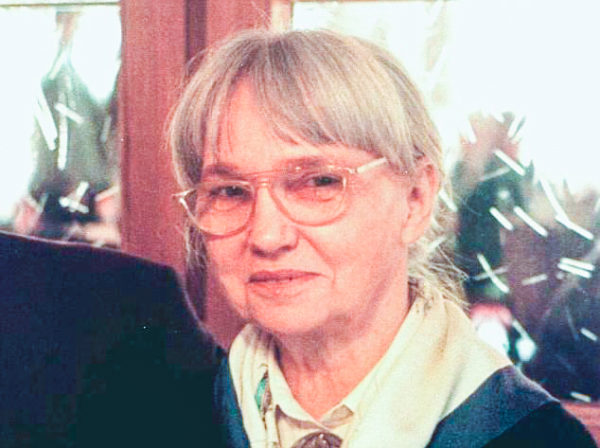
To the time of her death, Gudrun Himmler never renounced Nazi ideology and always maintained the Holocaust never occurred. Watch an interview with Katrin Himmler, author of Himmler Brothers – A German Family History here.
Wolf Rüdiger Hess/Rudolf Hess
On 10 May 1941, Hitler’s right-hand man, Rudolf Hess (1894-1987), flew to Scotland in a Messerschmitt 110 to reportedly arrange peace talks with the English (relevant British documents remain classified). He was arrested, held in prison until the end of the war, and finally, put on trial at Nuremberg with other Nazi leaders. Hess was sentenced to life imprisonment and forty-one years later, at the age of ninety-three, hanged himself in prison. Despite numerous pleas from the Americans and British to release Hess, the Soviets overruled them each time. Hess remained the sole prisoner in Spandau Prison until his death ⏤ the prison was destroyed in August 1987, weeks after Hess died.
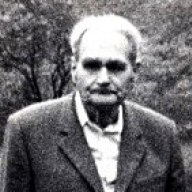
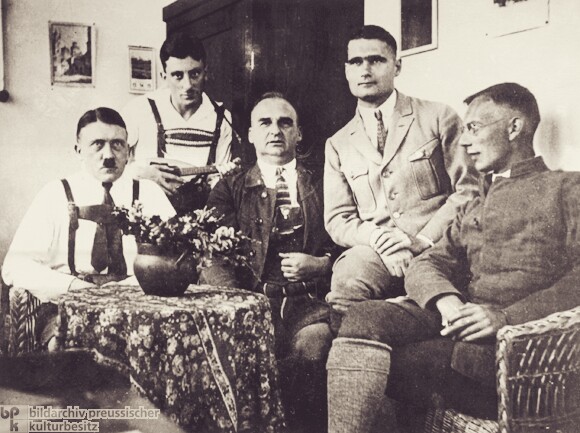
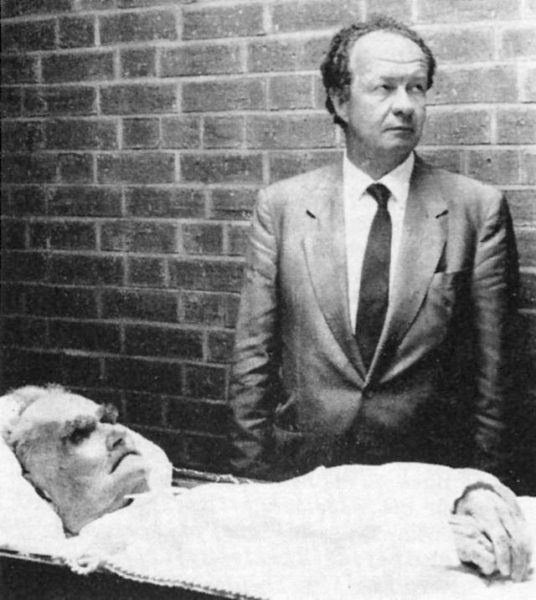
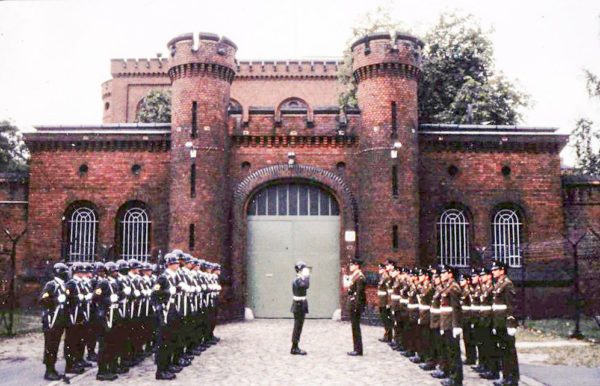
Until his death in 2001 at the age of 63, Wolf Rüdiger Hess (1937-2001) maintained his father had been murdered in prison. There were many who agreed with him and felt someone had “helped” Rudolf Hess kill himself. Wolf Hess was the only son of Rudolf and Ilse Pröhl Hess and he dedicated his life to getting his father out of prison and proving to the world that Rudolf Hess was not the monster everyone made him out to be. In the 1950s, Wolf founded the “Committee to Free Rudolf Hess” as well as writing three books in an attempt to convince people his father was a hero and not a criminal.
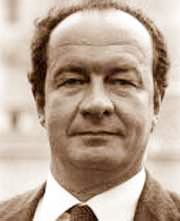
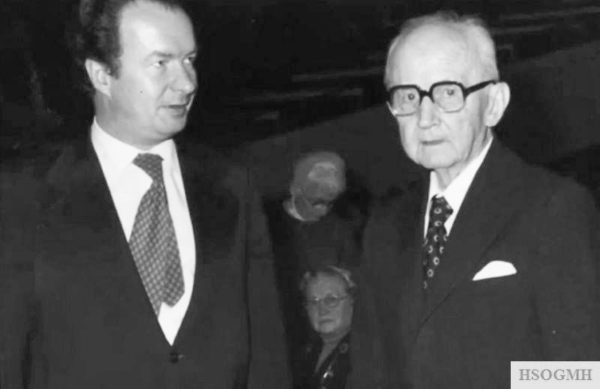
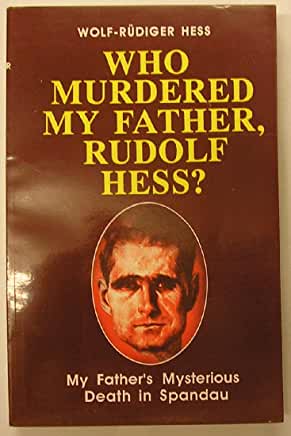
Fortunately for history, Wolf was not successful, and Rudolf Hess will rightfully be remembered as one of the key architects of the Nazi Party and the Third Reich. Watch Hess – The Last Prisoner of Spandau here.
Martin Adolf Bormann/Martin Bormann
Martin Bormann (1900-1945) was Hitler’s personal secretary and wielded immense power within the Nazi party including controlling the flow of information in and out of Hitler’s office. He was convicted in absentia by the Nuremberg court and sentenced to death for war crimes and crimes against humanity. He attempted to escape Berlin on 2 May as the Soviet army tightened its grip on the city. For years, it was unknown whether Bormann survived or was killed trying to escape. His body was found in 1972 but identification was not confirmed until 1998 through DNA tests. At that time, evidence suggested Bormann had committed suicide by biting down on a cyanide capsule. German authorities eventually released Bormann’s remains to be cremated by the family.
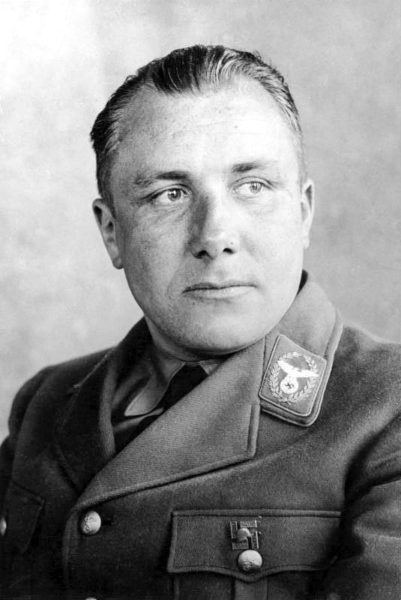
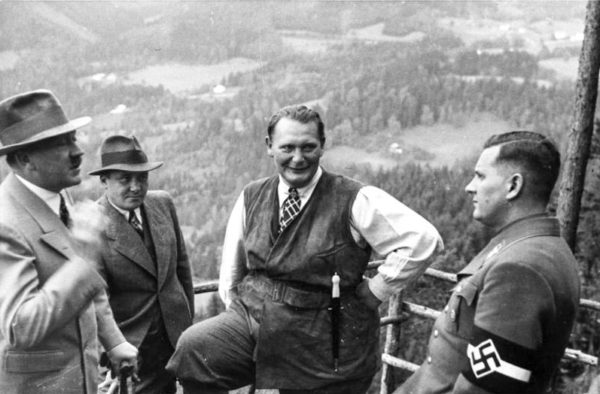
Bormann and his wife, Gerda, had ten children. The eldest was Martin Adolf Bormann (1930-2013) named after his godfather. Martin’s nickname in Nazi circles was Krönzi, short for Kronprinz or, “Crown Prince.” Bormann was extremely stern with his children and in particular, his eldest son. In later life, Martin would say there “was no connection or human warmth” between him and his father. At the end of the war, Martin was fifteen and he fled Munich to try and reach his mother who had escaped to the Italian South Tryol region. Gerda was eventually arrested and interrogated by the Allies. She passed away while in captivity without ever seeing her eldest son again. Martin read about his mother’s death a year later after an article was published in a local newspaper.
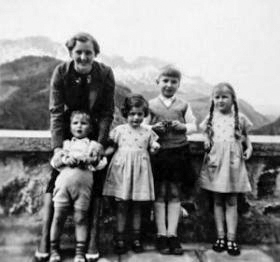
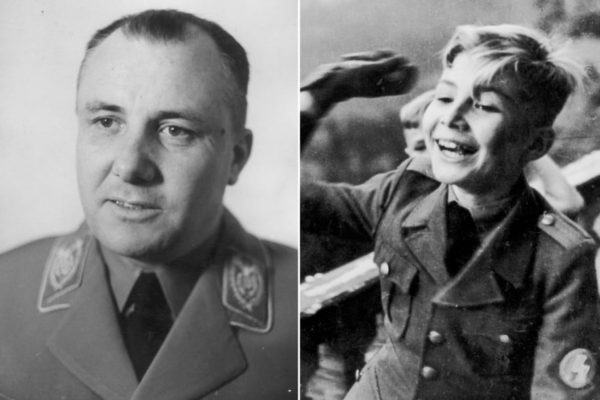
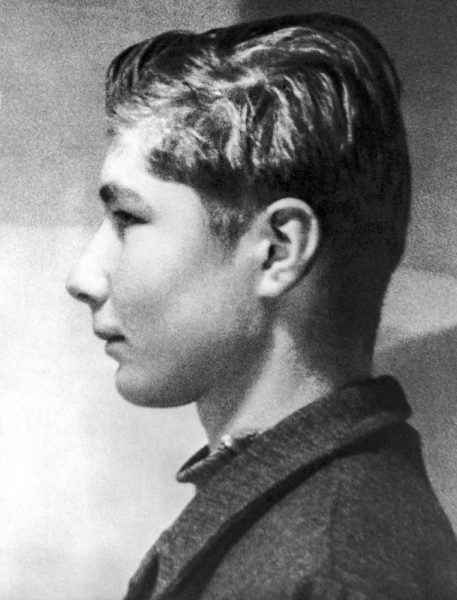
Taken in by a priest, Martin converted to Catholicism and eventually became a priest in 1958. He had a near fatal accident in 1969 and was nursed back to health by his eventual wife. Martin left the priesthood to marry Corula but they never had any children. He became a teacher of theology and retired in 1992. By 2001, Martin was touring German and Austrian schools speaking about the horrors of the Nazis including the Holocaust. In 2011, he was accused of sexual abuse by several of his former students ⏤ the accusers were eventually awarded compensation by the church. Martin never publicly condemned his father, but he never denied Bormann’s responsibility for his role in the Third Reich and the mass killings. Despite his belief that the death sentence was justified, Martin believed only God could judge his father. Martin also believed that the sins of the parents are not visited on their children. However, after saying that, the interviewer noted how Martin appeared haunted.
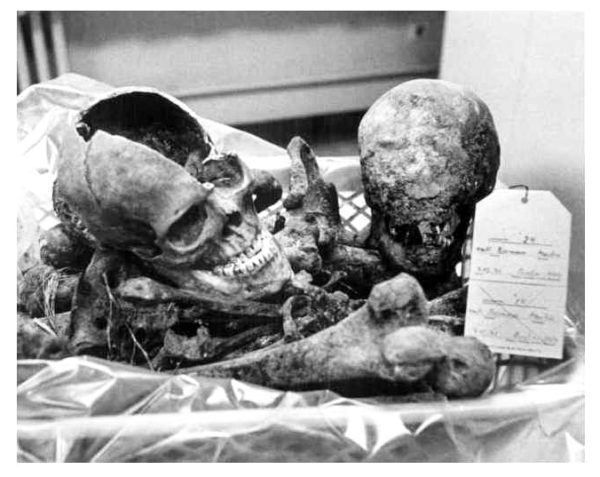
On 16 August 1999, Martin A. Bormann scattered his father’s ashes over the Baltic Sea.
Niklas Frank/Hans Frank
Hans Frank (1900-1946) was originally Hitler’s attorney. He became the Governor-General of the Nazi occupied territory of Poland and was hanged as a war criminal in October 1946 along with nine other condemned former Nazi leaders. Frank was responsible for Poland becoming a slaughterhouse by ordering the use of forced labor, mass murder of Jews, and operation of four extermination camps. He once boasted to a newspaper, “If I put up a poster for every seven Poles shot, the forests of Poland would not be sufficient to manufacture the paper for those posters.”
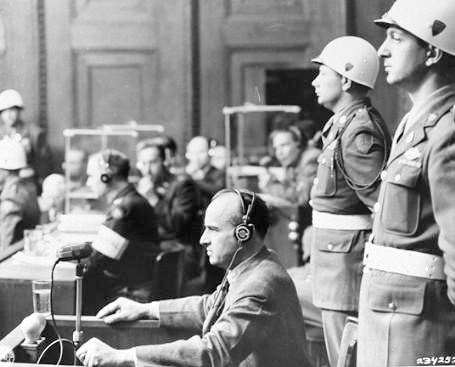
Niklas Frank (b. 1939) was the youngest child of Hans and Brigitte (who called herself “Queen of Poland”). The eldest child, Sigrid, remained a reverent Nazi until her death while the other daughter, Brigitte, committed suicide. Niklas was seven years old when his father was executed.
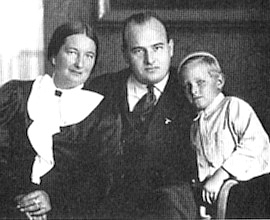
Niklas saw his first concentration camp at the age of four when his mother took him to Krakow where she could buy her corsets. Brigitte believed “no one makes better corsets than the Jews in the ghetto.” Immediately after the war, Niklas learned about his father’s evil role in the Nazi’s atrocities committed in Poland. This began a lifelong hatred for his family. He became a journalist and worked for several well-known magazines including Playboy and Stern. Niklas wrote a very controversial book, Der Vater: Eine Abrechnung or, “The Father: A Settling of Accounts.” It was a savage attack on his father, referring to him as “a slime-hole of a Hitler fanatic” as well as questioning Frank’s remorse before the execution.
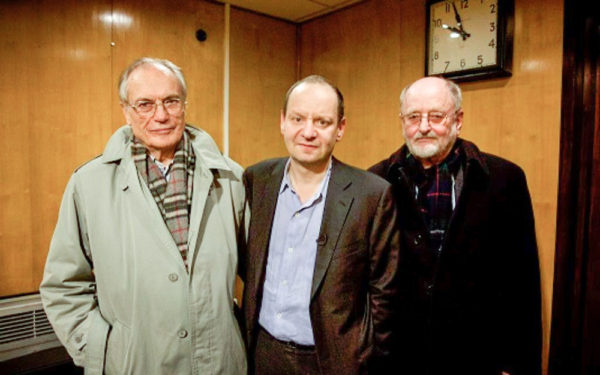
To this day, Niklas always carries with him a photograph of his father. It is the official death photo of Hans Frank minutes after his execution. Asked why he carries the photo, Niklas says, “I am pleased by what the picture shows. He is dead.” Watch an interview with Niklas Frank here.
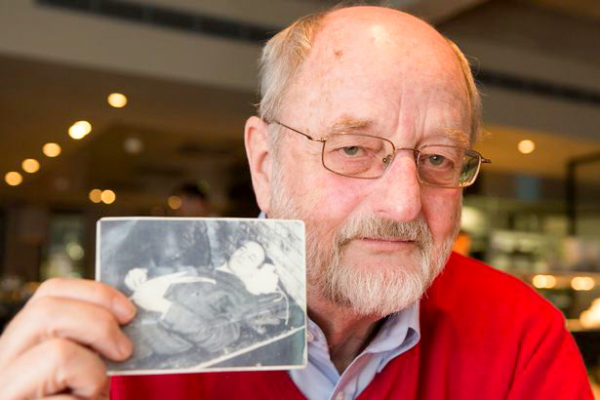
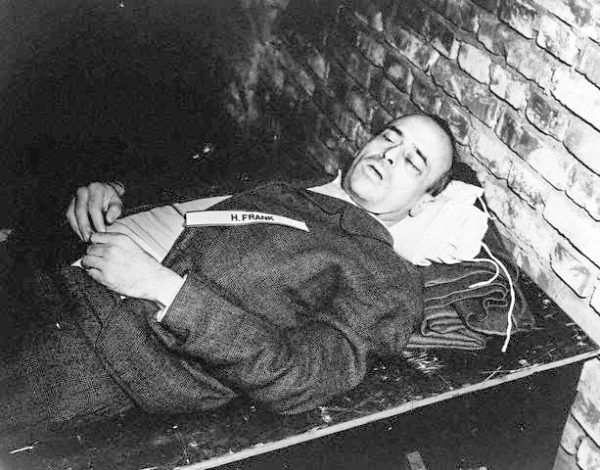
Rolf Mengele/Dr. Josef Mengele
Known as the “Angel of Death,” Dr. Josef Mengele (1911-1979) was one of the SS officers at Auschwitz in charge of sorting the arriving deportees into two groups: those who would live (“death through work”) and those who went to the gas chamber. He was also responsible for the medical experiments including ones on twins, many of them children. Mengele experimented on more than three thousand sets of twins of whom only 160 survived ⏤ fourteen sets of twins were murdered in one evening.
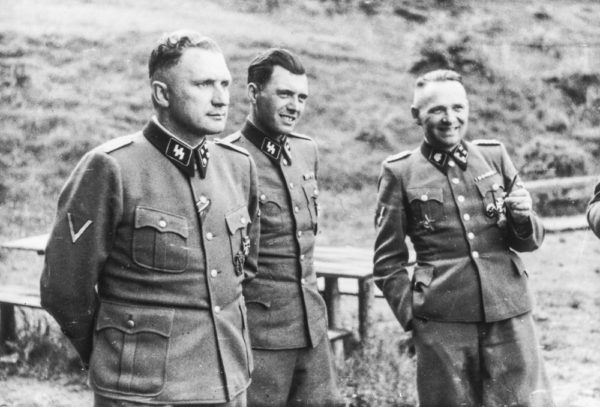
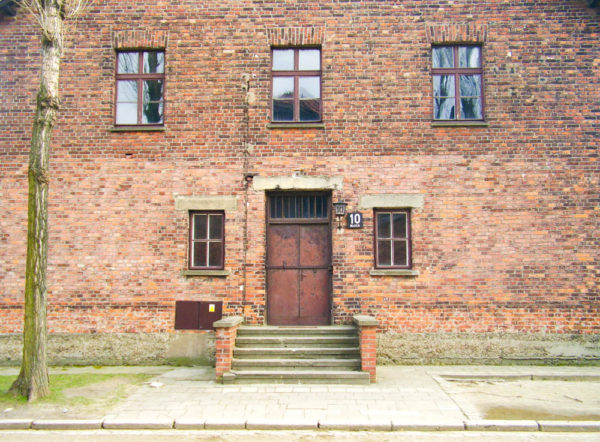
Rolf Mengele (b. 1944) is the only son of Mengele and his wife, Irene Schönbein. Rolf only met his father twice; once when he was twelve in 1956 (Mengele was introduced to Rolf as his uncle) and the second time for two weeks in 1977 ⏤ two years before Mengele drowned while swimming off the coast of Brazil. Rolf didn’t learn about his father’s Nazi past until he was sixteen. Rolf’s visit to his father in 1977 came after planning the trip for five years. The reported purpose of the trip was to find out how his father could have participated in the Nazi death machine.
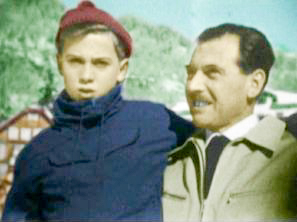
Upon arriving, Rolf found his father defensive and denied any responsibility for Nazi atrocities including his role in the medical experiments nor did Mengele deny his contempt for his victims. Rolf stayed with his father for two weeks and never divulged where Mengele was hiding to the authorities as he felt that would have been a betrayal. The family knew all along where Mengele was living and sent him money. Rolf rejected everything his father stood for and cannot understand why humans are capable performing the type of atrocities which his father committed. Rolf cooperated with the authors of Mengele: The Complete Story (published in 2000) and as part of the deal, twenty percent of the book’s profits are donated to Auschwitz survivors and victims of Mengele’s experiments.
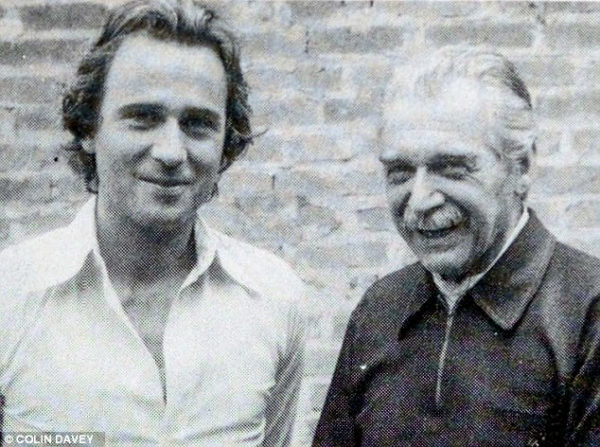
In order to spare his children from carrying the burden of his father’s surname, Rolf changed his last name and took his wife’s name (Jenckel) in 1980. Watch a Phil Donahue interview of Rolf Mengele here.
✭ ✭ ★ Learn More About the Children of the Damned ✭ ★ ★
Crasnianski, Tania. Translated by Molly Grogan. Children of the Nazis (originally published in 2016 as Enfants de Nazis). New York: Arcade Publishing, 2018.
Dwyer, Finola and Amanda Posey (Producers). What Our Fathers Did: A Nazi Legacy. Oscilloscope Productions, 2015. Watch the Children of Nazi Executioners interview with Niklas Frank and Horst von Wechter here.
Hess, Wolf Rüdiger. Mord an Rudolf Hess? Der Geheimnisvolle Tod Meines Vaters in Spandau (Murder of Rudolf Hess? The Mysterious Death of My Father in Spandau). Duffel, Germany: Leoni am Stamberger GmbH, 1989.
Hess, Wolf Rüdiger. Rudolf Heß: ‘Ich bereue nichts.’ (I regret nothing). Graz, Austria: Leopold Stocker Verlag GmbH, 1994.
Hess, Wolf Rüdiger. Mein Vater Rudolf Hess: Englandflug und Gefangenschaft (My Father Rudolf Hess: Flight to England and Captivity). Munich: Langen Müller Verlag, 1984.
Lebert, Stephan and Norbert. Translated by Julian Evans. My Father’s Keeper: Children of Nazi Leaders. New York: Little, Brown and Company, 2001.
Frank, Niklas. Der Vater: Eine Abrechnung (The Father: A Settling of Accounts). Munich: Wilhelm Goldmann GmbH, 2006.
Frank, Niklas. In the Shadow of the Reich. New York: Knopf, 1991.
Posner, Gerald L. and John Ware. Mengele: The Complete Story. New York: Cooper Square Press, 2000.
What’s New With Sandy and Stew?
Sandy and I spent the 2019 Chinese New Year in Singapore. We ate Peking Duck and other delicacies. It was quite a cultural experience to see the rituals performed at each table in the restaurant. This year, we were home celebrating Chinese New Year with food that Sandy cooked. We stood up and threw our noodles high in the air. Since it’s the year of the Rat (read the blog Paris Therapy Pets here), I’m sure you’ll run to the nearest Chinese cookbook to ensure you aren’t eating a rat.
Thank you to all of you who subscribe to our bi-weekly blogs. It seems there isn’t a day that goes by where we don’t increase our readership. Please let your history buff friends and family members know about our blogs.
Someone Is Commenting On Our Blogs
I’d like to thank Christine S. for her e-mail in early February 2020. Christine was curious about our presentations and whether one had to attend in person or if these lectures were available in podcasts or on YouTube. Great question Christine! At this time, you have to sign up to attend. However, you’ve given us something to chew on for the future. I doubt we would consider doing podcasts. We rely very heavily on images for the books, blog posts, and our lectures ⏤ a complete list of lecture topics can be found at www.stewross.com. However, a series on You Tube is something that might give us some traction (as well as emptying our bank account).
Perhaps we do four separate ten-minute segments on a particular lecture ⏤ kind of an abridged version of the presentation? Along those lines, we pick a couple of blogs and put them into a You Tube short video.
What do you all think of those ideas? Please e-mail us with your thoughts. Again, thanks Christine for contacting us.
If there is a topic you’d like to see a blog written about, please don’t hesitate to contact me. I love hearing from you so keep those comments coming.
Progress Report on the New Book, Where Did They Put the Gestapo Headquarters?
I promised you I would keep everyone up to date on the progress of my new book. I’ve dabbled a little bit with the call outs, and they are almost completed in the first draft. Once finished, I’ll move on to fleshing out the chapters or stops.
Why Would You Want To Buy Our “Walks Through History” Books?
Simple.
You like to travel and experience history and historical events. You like to see original buildings that had a significant impact on the people and events of the history you’re engaged with. You want to know the stories behind the brick and mortar in front of you.
The walking tour books are meticulously researched so you can go directly to those sites and learn about the building’s history as well as an introduction to some of the more interesting people associated with it.
We Need Your Help
Please tell your friends about our blog site and encourage them to visit and subscribe. Sandy and I are trying to increase our audience and we need your help through your friends and social media followers.
Thank You
Sandy and I appreciate you visiting with us. We have some exciting things on the horizon and we’ll keep you updated as we go along.
Share This:
Follow Stew:
Find Stew’s books on Amazon and iBooks.
Please note that we do not and will not take compensation from individuals or companies mentioned or promoted in the blogs.
 Walks Through History
Walks Through History
Copyright ©2020 Stew Ross


This is fascinating information!
Thanks Jane. I agree that it is incomprehensible that people deny or disown the horrible events the Nazis were responsible for. Unfortunately, we will never be able to totally eradicate that kind of thinking but hopefully, society can monitor and keep these types of people from ever coming to power again. STEW
Hello Stew,
It is amazing and profoundly sad to think that, after all these years of tangible proof of events and live testimonies some misguided people still do not acknowledge the Holocaust ever happening. It is very disturbing.